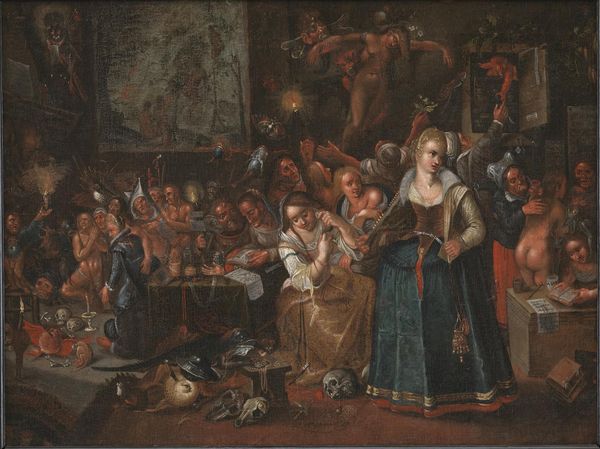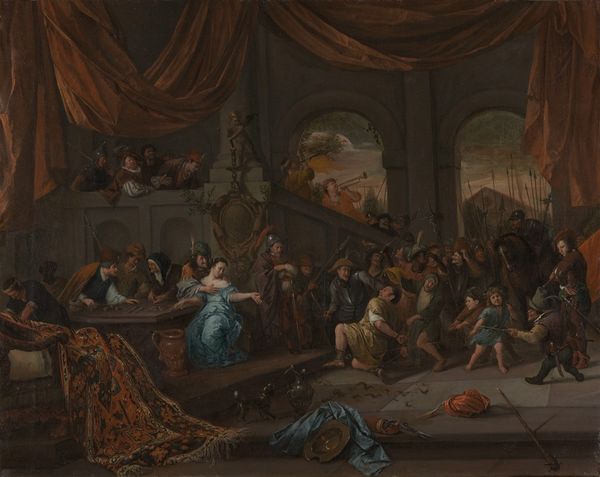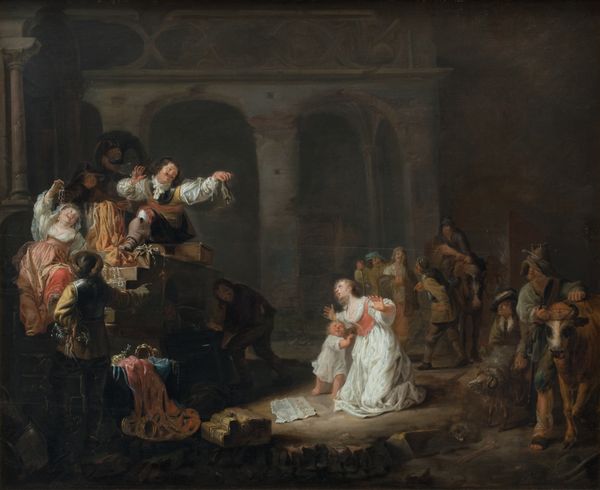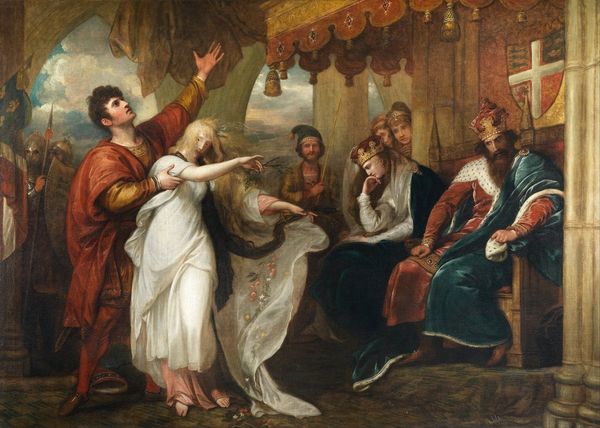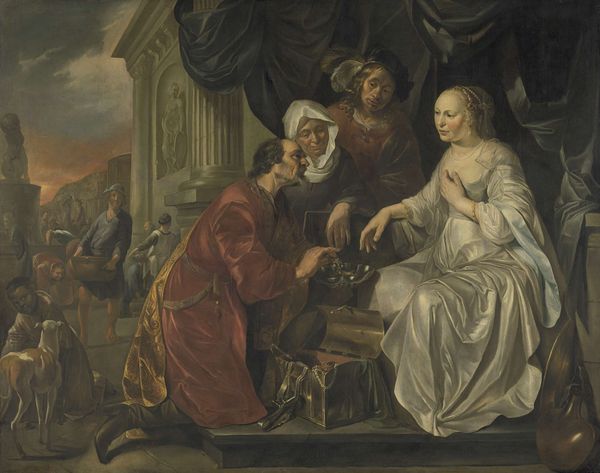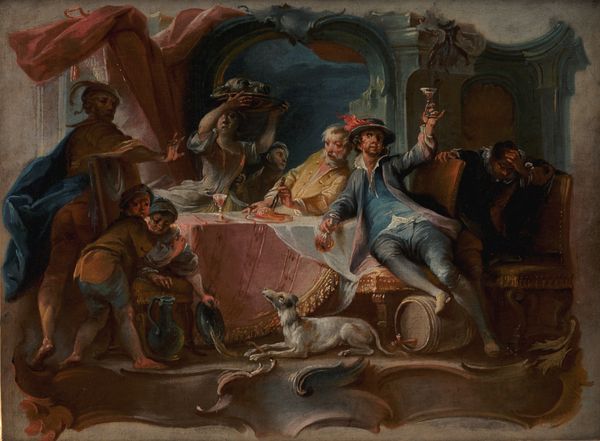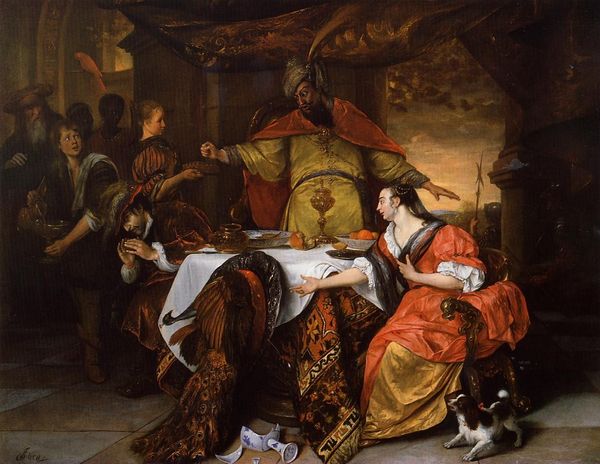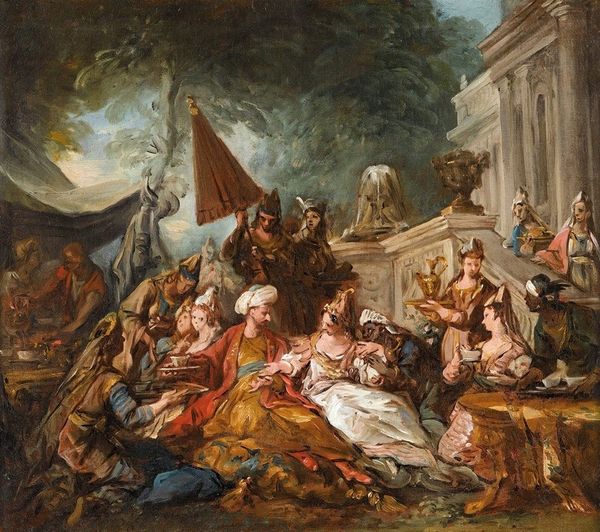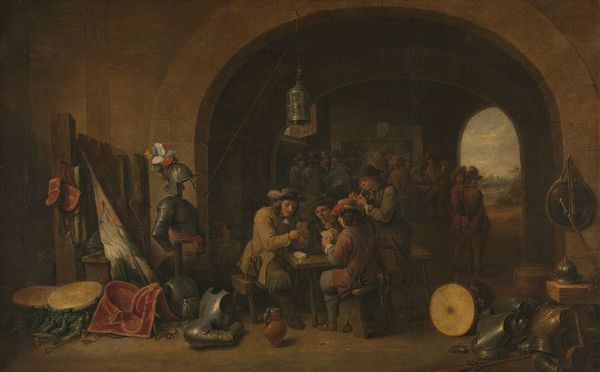
painting, oil-paint
#
narrative-art
#
baroque
#
dutch-golden-age
#
painting
#
oil-paint
#
figuration
#
oil painting
#
genre-painting
#
history-painting
Copyright: Public Domain: Artvee
Curator: So much tension! I feel like I walked in on a theatrical production that's just reaching its climax. The high drama in the gestures and facial expressions are really what grabbed me first. Editor: Agreed! You're looking at "Esther, Ahasuerus, and Haman" created around 1668 by Jan Steen. It’s a masterclass in narrative painting from the Dutch Golden Age, depicting a pivotal scene from the Book of Esther. Curator: Oh, the famous reveal! It’s amazing how Steen manages to convey the weight of the moment. Ahasuerus looks absolutely thunderstruck—like he's been caught off guard. Haman looks green... I'm guessing he knows what's coming. There is also a weird chaos present through this. The angle of Haman's chair seems physically off. Editor: Absolutely. Steen excels at capturing these moments of high emotion and social drama. The play of light and shadow adds to that sense of unease, wouldn’t you say? Notice the detail, not only in the characters' faces, but in the richness of their garments. These things convey status and, perhaps, hidden intentions. And you're spot on about Ahasuerus. In terms of history painting at the time, such a dynamic interpretation was innovative. He captured human drama against a political canvas. Curator: The faces say everything. Esther's calm defiance, juxtaposed against Haman's stunned despair. And then there’s the crowd! Are they shocked? Bemused? A little bloodthirsty perhaps? So much intrigue in their expressions! I’m finding it difficult to pull myself away from everyone's faces. What does this all say to you? Editor: It speaks volumes about the complex intersection of politics, personal courage, and the power of narrative. In its time, it served as a powerful reflection of the Dutch Republic's own struggles for independence. Also, there's the museum's perspective: how it frames, preserves, and contextualizes it, transforming it from a moment into an enduring symbol. Curator: I still find myself swept up in the human story. Even removed from the politics and history, I feel Esther’s resilience echoing across centuries. She may be draped in fine garb, but look at her—she radiates bravery. Editor: Yes, Steen invites us to look beyond the canvas to see both the individual stories and the broader social contexts that make the moment so potent. I always learn something from his capacity to merge life and politics.
Comments
No comments
Be the first to comment and join the conversation on the ultimate creative platform.



